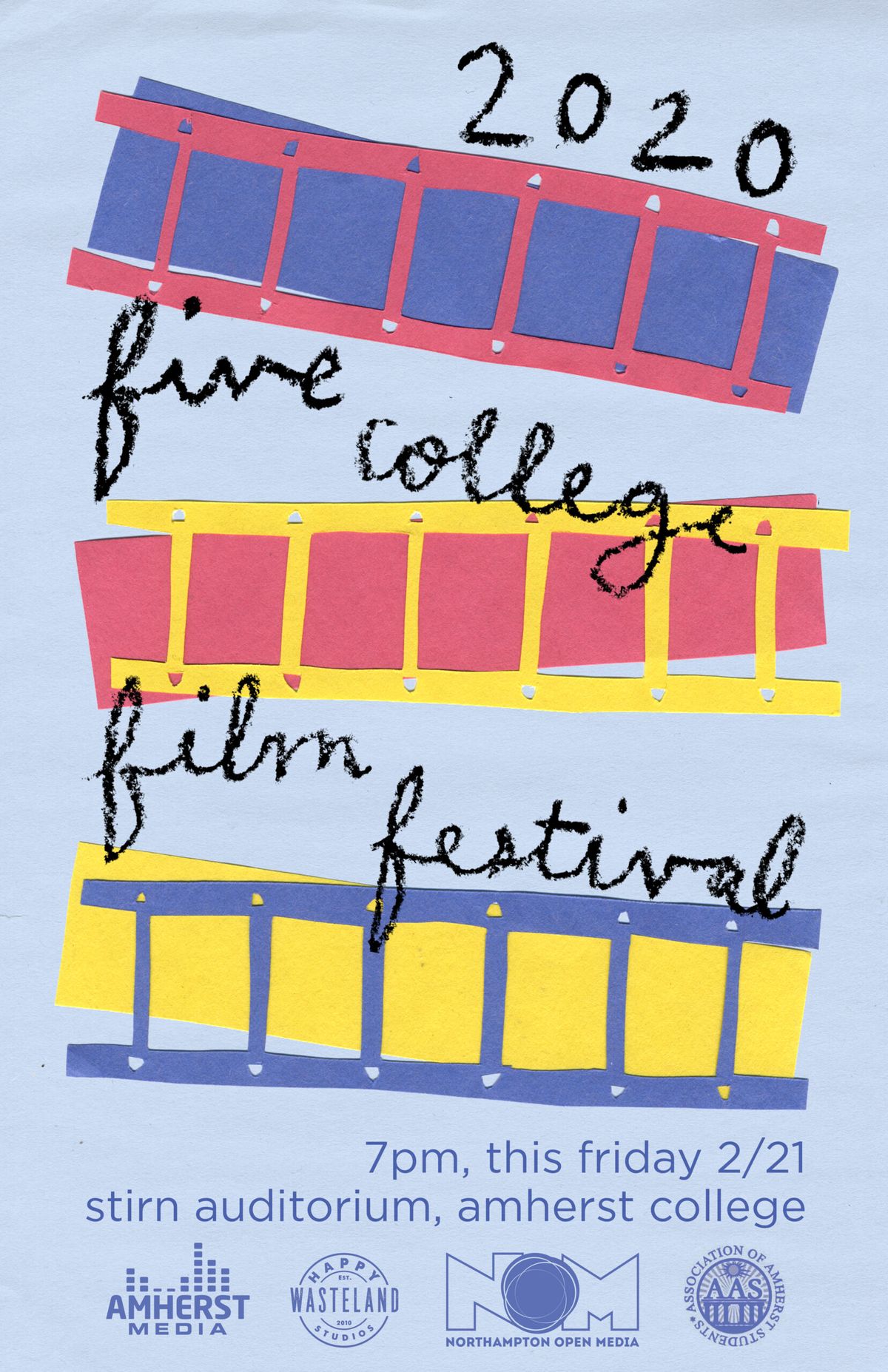Annual Five College Film Festival Showcases Student Talent

Amid bustle and excitement, the annual Five College Student Film Festival took place in Stirn Auditorium on Friday, Feb. 21. The festival offers a place for five college students to showcase their original films and videos, as well as meet, collaborate and share with other film students.
A group of students from each of the five colleges organizes the festival with the assistance of Robin Blaetz, professor of film studies at Mount Holyoke College and Hope Tucker, assistant professor of video & film at Hampshire College. Of the 70 submissions, 26 were screened during the Friday program. A jury of students and faculty members from each college evaluated the submissions in the competition, screening and awarding selected works.
Jackson Lee ’21, a student director from Amherst, opened the program for the day, explaining how each of the screened films were selected for their quality. “I hope you can all feel connected to the individuals behind the productions through the screen,” he said.
“Pilgrimage,” an animated piece situated in the realm of the shadow world, kicked off the screening with its sheer tranquility and meditating reminiscence. Created by Abbey Paccia, a graduate student at the University of Massachusetts Amherst, the film showed her hiking experiences on the Pacific Coast through a loose narration in inky strokes. In the introduction of her film, she explained her attempt to display “the dissolving of the self with each conscious footstep.” The surreal narration and the loving embrace of the landscape set the tone for the festival — liminal, innovative and inspiring.
Two documentaries — “Theater: Beyond the Stereotypes” and “Phuntsok” — played next. “Theater” examined the impact of theater on people of color in under resourced communities. The story took place in Lawrence, Massachusetts, a town with a large low-income population. Through interviews from alumni, current students and the directors of the Lawrence High School Theater Company, the film gave the audience a new perspective on how whiteness impacted the process of artists of color surpassing stereotypes and social norms.
“Phuntsok,” painted a portrait of Dr. Phuntsok, the director of a clinic in the remote mountain range of East Tibet. The film delivered a poignant tale documenting the transformative moments that occurred for Dr. Phuntsok and the local Tibetan community as a whole. Throughout the film, student director Joseph Weingrad fused elements of Buddhist philosophy, traditional Tibetan singing, religion and Western medicine. Both documentaries perfectly captured the idiosyncrasies of different underrepresented communities as well as the universality of human struggle.
The main category for the festival was narrative. Narrative films perfectly connected the world of reality with the world of fiction. Watching “Sleep Paralysis” by Cass Fernandez-Dieguez from Mount Holyoke, the audience experienced the thrill of murder mysteries while having occasional good laughs at the dark humor weaved throughout the story.
In contrast to the high tension in “Sleep Paralysis,” “Hey, Ravioli!” By Lena Lamer ’22 from Amherst told a light-hearted story based on an anecdote about sticking one’s hands in a bowl of Chef Boyardee ravioli. The directors and producers of narrative films fabricated worlds beyond reality that at the same time coincided with genuine human experiences.
The highlight of the entire festival had to be the screening of experimental films. They illustrated the substantialization of abstract ideas. Deviating from traditional storytelling forms, experimental films stir feelings in subtle, implicit and nuanced ways. In his short film “1967,” Mohammad Kawish from Hampshire examined the advancements in photo-technology in contrast to stasis in the improvements of the human condition.
The film intertwined advertisements of recent camera technology with news footage of the Isreali-Palestinian conflict. With an aesthetic look and the feel of a 16mm film, the experimental piece motivated the audience to reflect upon the lack of true progress in humanity.
“Alien” by Rachel Jin ’21 from Amherst featured a female protagonist whose postures were captured through a black-and-white lens. This silent film with occasional color inversion led the audience through an exploration of physical bodies with seemingly alien forms.
Ethan Crain from Hampshire created his film — “I can remember places I have never been to” — entirely on found materials on YouTube. With unrelated videos layered upon each other, his work approached a state of recorded life with a sense of interconnectivity and playfulness.
The pieces are only a small fraction of the great films screened at the festival. Judges assigned awards for the best in each category, the jury’s choice, the audience’s choice and five honorable mentions at the end of the ceremony.
Best Animation went to “Pilgrimage” by Abbey Paccia; Best Documentary went to “Theater: Beyond the Stereotypes” by My Huynh; Best Experimental went to “I can remember places I have never been to” by Ethan Crain; Best Narrative went to “Sleep Paralysis” by Cass Fernandez-Diegue; and Jury’s Choice went to “Pennies” by Pat Summers.





Comments ()